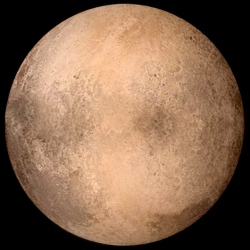
A team of astronomers has performed new calculations on the data that originally gave rise to the Planet Nine hypothesis, and these new numbers suggest that the hypothetical extra planet might not be alone, there could be multiple planets hiding at the edge of our Solar System that we’ve yet to discover.
If the researchers are correct, which nobody knows for sure right now, it could really mean a do-over for the high school textbooks.
But first, let’s backtrack a little to explain how we got to this point. In January, researchers from the California Institute of Technology (Caltech) found evidence for what they call Planet Nine, a huge icy planet that could be lurking somewhere beyond Neptune in the far reaches of our Solar System.
The scientists estimate that Planet Nine is 10 times more massive than Earth, and think it performs an extremely elongated orbit of the Sun, that takes between 10,000 and 20,000 years to complete.
The Caltech researchers based their hypothesis for the existence of Planet Nine on the unusual movement of six large objects floating in the Kuiper belt, suggesting that their orbits are being shaped by a hidden planet.
But now a new team of astronomers suggests that these Kuiper belt objects (KBOs) – specifically classified as extreme trans-Neptunian objects (ETNOs), meaning objects that orbit the Sun beyond Neptune – might not be as stable as had been previously thought.
"With the orbit indicated by the Caltech astronomers for Planet Nine, our calculations show that the six ETNOs, which they consider to be the Rosetta Stone in the solution to this mystery, would move in lengthy, unstable orbits," says one of the team, Carlos de la Fuente Marcos,, an independent Spanish astronomer.
In other words, the gravitational effect that Planet Nine itself would have on these icy, rocky dwarf planets could help make them too unstable to be moving the way the Caltech scientists think they are.
"These objects would escape from the Solar System in less than 1.5 billion years," said de la Fuente Marcos, "[and three of them] could abandon it in less than 300 million years. What is more important, their orbits would become really unstable in just 10 million years, a really short amount of time in astronomical terms."
According to de la Fuente Marcos and his fellow researchers – brother Raúl and Sverre J. Aarseth from the University of Cambridge in the UK – it’s possible that the stability of these objects might instead be due to the gravitational pull of a number of undiscovered planets hidden somewhere on the edges of the Solar System, meaning Planet Nine could have company.
"That is to say we believe that in addition to a Planet Nine, there could also be a Planet Ten and even more," said de la Fuente Marcos.
Not everybody is convinced by the new findings. Astronomer Mike Brown, one of the Caltech team who originally introduced the Planet Nine hypothesis, is critical of the new paper.
"I think it’s way too early to start speculating about a second planet, but, in general, I am confused by their results," he told Abigail Beall at the Daily Mail. "We have a nearly identical analysis which shows nearly the opposite result. It is not obvious to me why they would get such a different answer."
While it’s not clear yet exactly what’s going on here with the rival calculations, what is apparent is just how excited the astronomy community is about the prospect of finding this still-unconfirmed Planet Nine.
